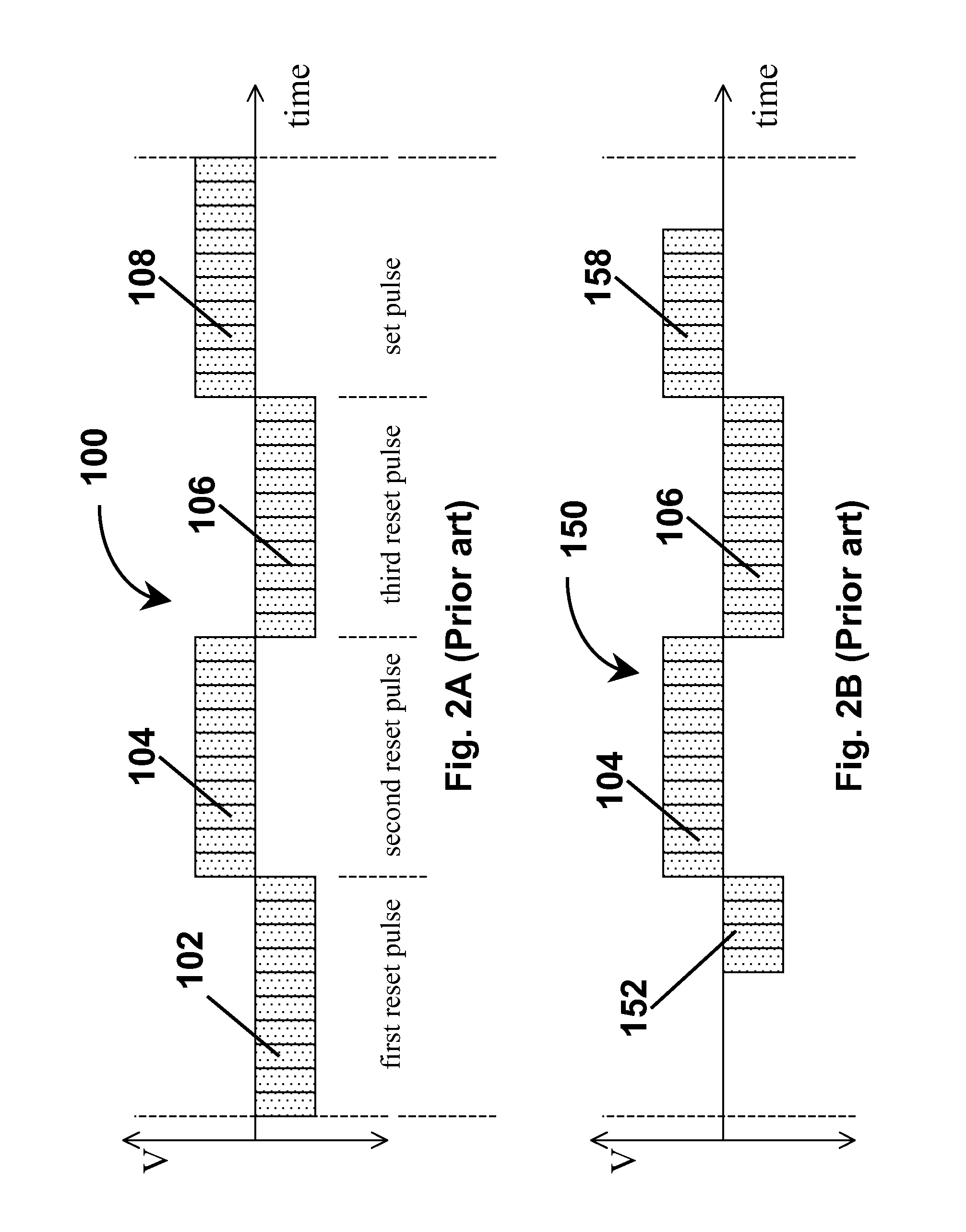Nevertheless, problems with the long-term
image quality of these displays have prevented their widespread usage.
For example, particles that make up electrophoretic displays tend to settle, resulting in inadequate service-life for these displays.
Such gas-based electrophoretic media appear to be susceptible to the same types of problems due to particle
settling as liquid-based electrophoretic media, when the media are used in an orientation which permits such
settling, for example in a sign where the medium is disposed in a
vertical plane.
Indeed, particle
settling appears to be a more serious problem in gas-based electrophoretic media than in liquid-based ones, since the lower
viscosity of gaseous fluids as compared with liquid ones allows more rapid settling of the electrophoretic particles.
However, inevitably there is some error in writing images on an impulse-driven display.
(a) Prior State Dependence; With at least some electro-optic media, the impulse required to switch a pixel to a new optical state depends not only on the current and desired optical state, but also on the previous optical states of the pixel.
(b) Dwell Time Dependence; With at least some electro-optic media, the impulse required to switch a pixel to a new optical state depends on the time that the pixel has spent in its various optical states. The precise nature of this dependence is not well understood, but in general, more impulse is required that longer the pixel has been in its current optical state.
(c) Temperature Dependence; The impulse required to switch a pixel to a new optical state depends heavily on temperature.
(d)
Humidity Dependence; The impulse required to switch a pixel to a new optical state depends, with at least some types of electro-optic media, on the
ambient humidity.
(e) Mechanical Uniformity, The impulse required to switch a pixel to a new optical state may be affected by mechanical variations in the display, for example variations in the thickness of an electro-optic medium or an associated lamination
adhesive. Other types of mechanical non-uniformity may arise from inevitable variations between different manufacturing batches of medium, manufacturing tolerances and materials variations.
(f)
Voltage Errors; The actual impulse applied to a pixel will inevitably differ slightly from that theoretically applied because of unavoidable slight errors in the voltages delivered by drivers.
This accumulation of errors phenomenon applies not only to errors due to temperature, but also to errors of all the types listed above.
As described in the aforementioned 2003 / 0137521, compensating for such errors is possible, but only to a limited
degree of precision.
For example, temperature errors can be compensated by using a temperature sensor and a
lookup table, but the temperature sensor has a limited resolution and may read a temperature slightly different from that of the electro-optic medium.
Similarly, prior state dependence can be compensated by storing the prior states and using a multi-dimensional transition matrix, but controller memory limits the number of states that can be recorded and the size of the transition matrix that can be stored, placing a limit on the precision of this type of compensation.
Obviously, a pure general
grayscale image flow drive scheme cannot rely upon using the optical rails to prevent errors in gray levels since in such a drive scheme any given pixel can undergo an infinitely large number of changes in
gray level without ever touching either optical rail.
Although these problems can be reduced or overcome by driving all pixels of the display to one of the extreme states for a substantial period before driving the required pixels to other states, the
resultant “flash” of
solid color is often unacceptable; for example, a reader of an
electronic book may desire the text of the book to scroll down the screen, and may be distracted, or lose his place, if the display is required to flash
solid black or white at frequent intervals.
Furthermore, such flashing of the display increases its
energy consumption and may reduce the working lifetime of the display.
However, such DTC may conflict with other desirable properties of drive schemes.
Optical errors can arise from DTD of a display.
The problem with this approach to DTC of a drive scheme is that the drive scheme as a whole is no longer DC balanced.
Repeating this loop causes a build-up of DC imbalance, which can be detrimental to the performance of the display.
However, in most of the aforementioned methods and controllers, the updating operation is “atomic” in the sense that once an update is started, the memory cannot accept any new image data until the update is complete.
This causes difficulties when it is desired to use the display for applications that accept
user input, for example via a keyboard or similar
data input device, since the controller is not responsive to
user input while an update is being effected.
It is known to use structures already developed for gray scale image displays to reduce the unresponsive period by up to 65 percent, as compared with prior art methods and controllers, with only modest increases in the complexity and memory requirements of the controller.
 Login to View More
Login to View More  Login to View More
Login to View More 


